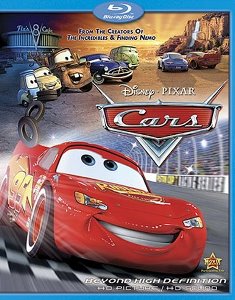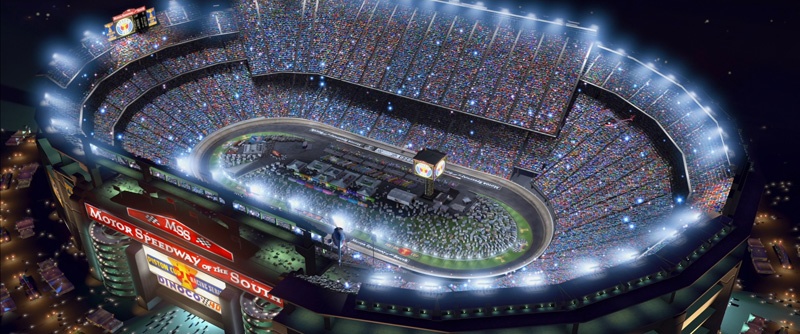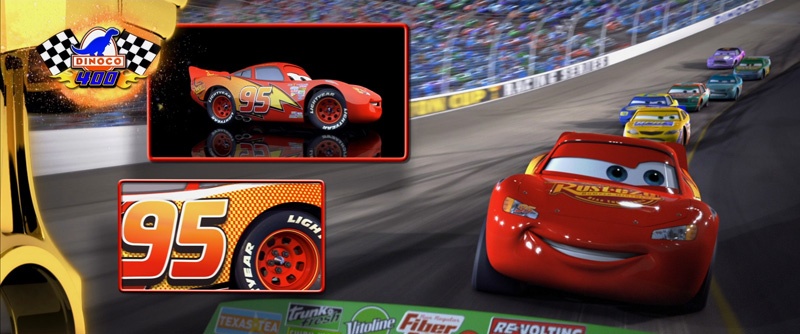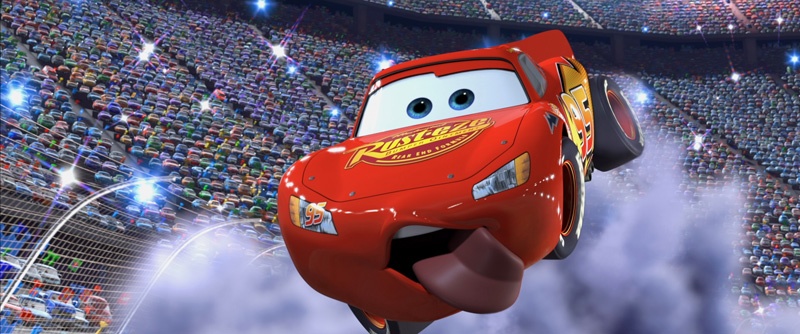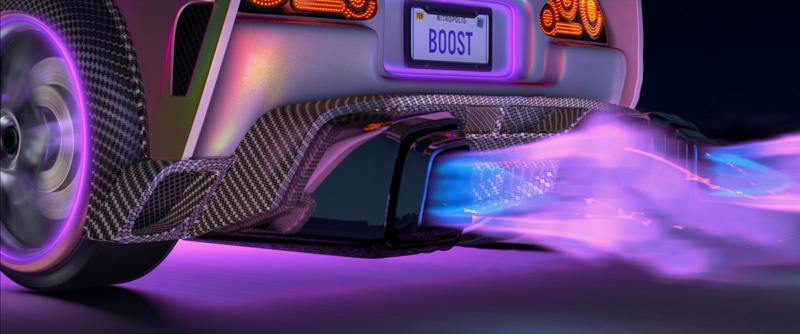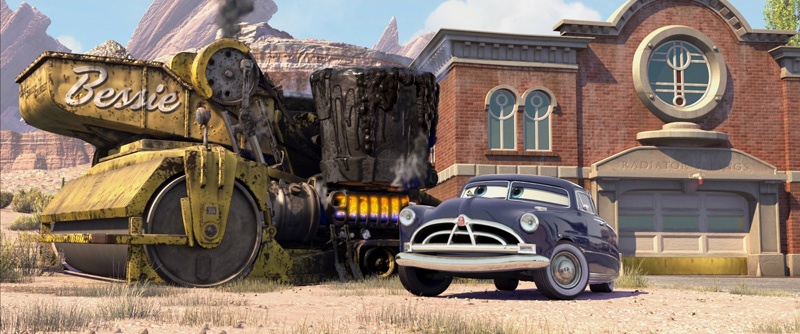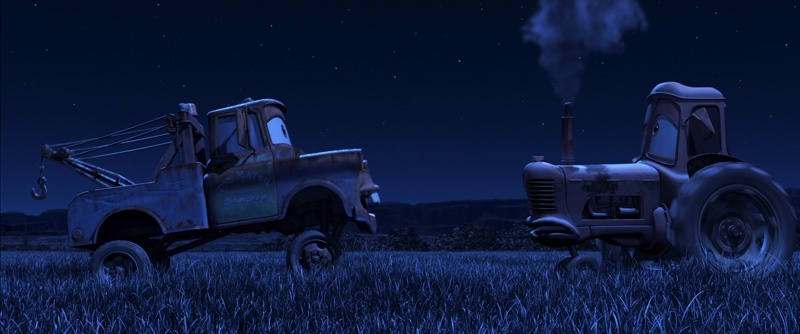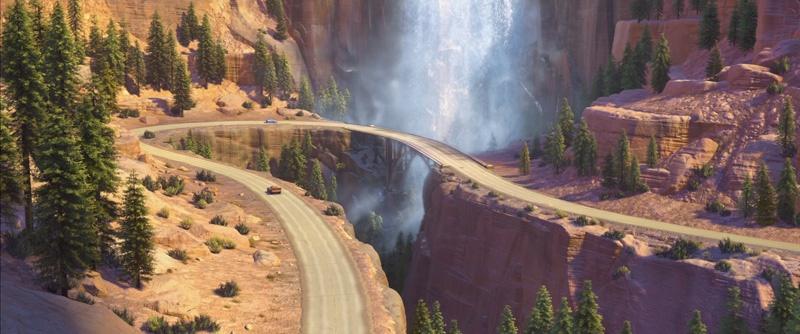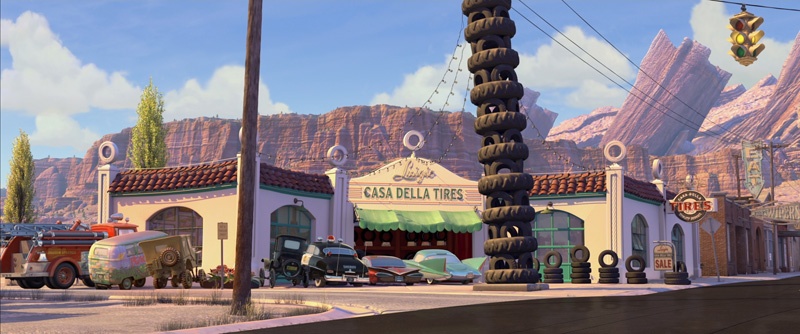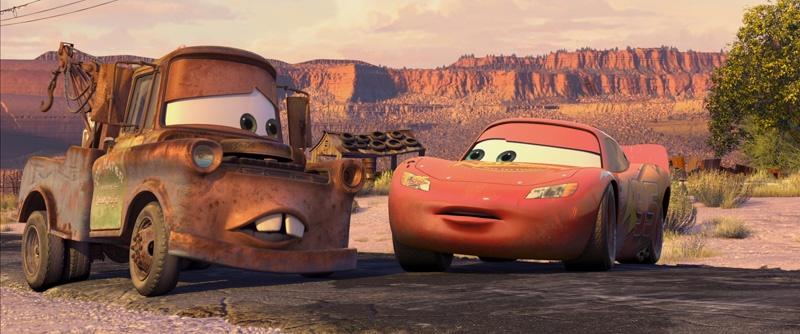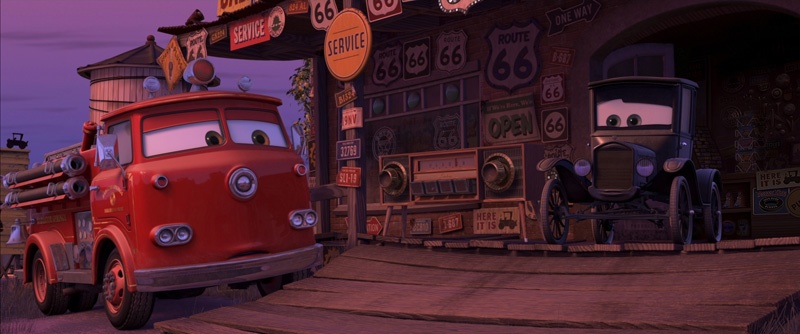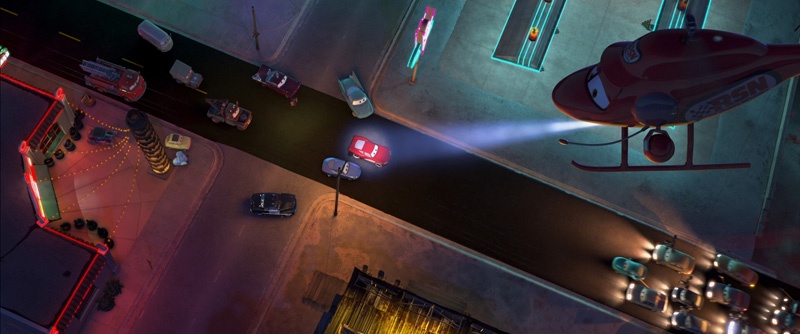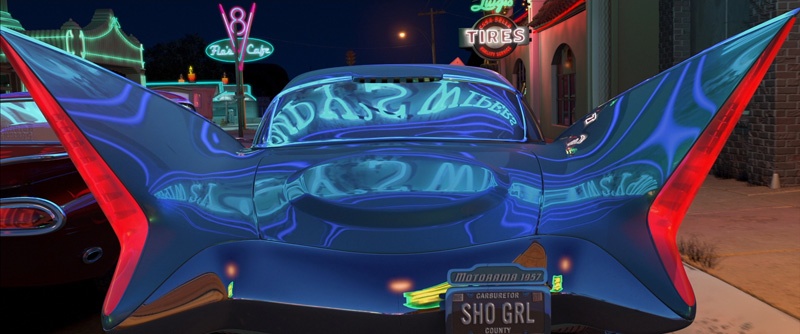Cars - BRD
(John Lasseter, 2006)
Studio: Pixar Animation / Walt Disney Studios Home Entertainment (USA)
Disc:
Region: FREE! (as verified by the Momitsu region FREE Blu-ray player)
Runtime: 1:56:35.989
Disc Size: 41,361,867,404 bytes
Feature Size: 29,215,279,104 bytes
Video Bitrate: 23.20 Mbps
Chapters: 33
Case: Standard Blu-ray case
Release date: November 6th, 2007
Video:
Aspect ratio: 2.39:1
Resolution: 1080p / 23.976 fps
Video codec: MPEG-4 AVC Video
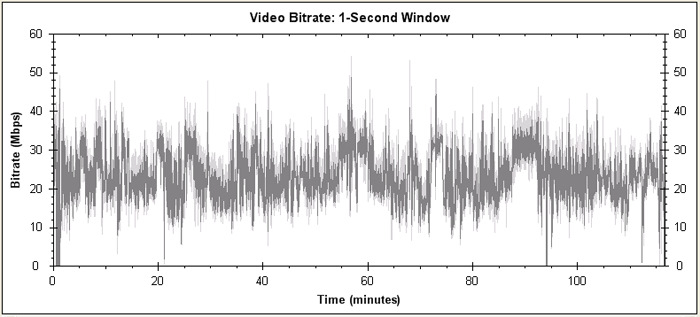 |
Audio:
LPCM Audio English 6912 kbps 5.1 / 48 kHz / 6912 kbps / 24-bit
Dolby Digital EX Audio English 640 kbps 5.1-EX / 48 kHz / 640 kbps
Dolby Digital Audio English 192 kbps 2.0 / 48 kHz / 192 kbps
Dolby Digital Audio English 192 kbps 2.0 / 48 kHz / 192 kbps
Subtitles:
English (SDH), English, none
Extras
• Cine-Explore (an in-movie behind-the-scenes interactive experience)
• Radiator Springs Featurette
• Carfinder Video Game
• Animated Shorts: Mater & the Ghostlight • One Man Band
• Deleted Scenes
Cars ~ Comment
The key to animation is, well, animation - that is, to make alive that which is not. Drawings of fanciful creatures are, nonetheless, far less "alive" than movies with live actors, yet they can touch our hearts sometimes in ways that we ourselves do not or cannot. In Snow White and the Seven Dwarfs Walt Disney animated not only humanoids, but also forest animals and even a mirror. His story of Pinocchio was, after all, all about animation. True, there is an obvious anthropomorphic face to these critters, but still, emotion is expressed that is recognizable to us and with which we can identify. But it was in Fantasia that the purely inanimate, and even the abstract, came alive: volcanoes, clouds, water surfaces, splashes of color and, in perhaps the funniest conceit of all, a soundtrack. Through it all, and for all kinds of reasons – religious and otherwise - the idea was to give our universe a human face.
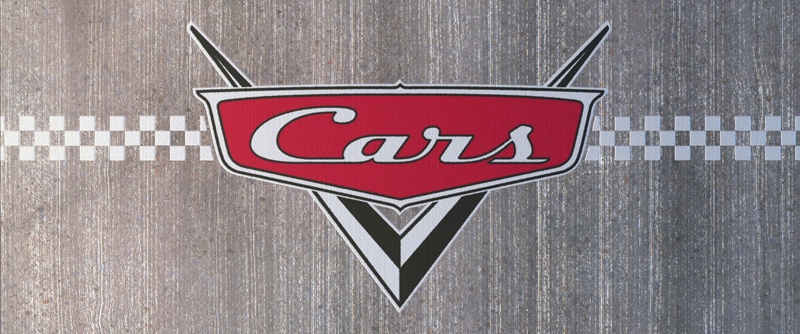 |
From prehistoric time, drawings and paintings could and would express and communicate drama, feeling and attitude. But it was not until only two decades ago that computer software could be used as a tool to accomplish similar results, first in the experimental short films produced by the Lucasfilm animation group - which was soon to form its company, Pixar - and eventually a full length feature film. Particularly if you are not a computer nerd (as I am not), how this is accomplished seems remote and unnecessarily complex, since drawing and painting can accomplish the same end more efficiently. But as Toy Story was to prove, the result wasn't quite the same. There is a quasi-realistic dimensionality to computer animation that isn't so easily rendered in hand-drawn animation. There is also the possibility of creating photo-realistic images, an option, I feel, one takes at one's peril. Cars manages to sit on both sides of that fence fairly successfully. It's undoing, it turns out, lies elsewhere.
Ever since 1995, with Toy Story, I have waited with baited breath (for which I take quantities of lozenges) for each successive Pixar movie. Even then, I felt that Toy Story was the best film of the year: It had the best script, the best production design and the best actors – by which I mean the actual toy actors, not the voices of the carbon units. The Academy reacted promptly: A new category for Best Animated Feature: Smart move, given that these movies were as good or better than the best live action films of the day. The first to win, surprisingly enough, was not a Pixar film. It was Shrek which, given Pixar's Monsters, Inc. gives you some idea of how keen the competition. Of the six winners so far, three have come from Pixar. Cars was not one of them, having lost to Animal Logic's completely forgettable (he said, grimly) Happy Feet.
Anyhow, the point is that the world has taken to animated features in a way they hadn't since Walt Disney released, in succession: Snow White, Pinocchio, Fantasia, Dumbo (my personal favorite) and Bambi over a six year period from 1937-1942. Those Disney features were meticulously hand painted, and while the art form did not progress over the decades - quite the contrary – things were happening elsewhere that finally resulted in Toy Story. It took Pixar's animators and software designers over ten years from the release of their short (and I mean, short) demonstration film, The Adventures of André and Wally B., to arrive at what remains the pinnacle of computer animation where everything come together in sheer magic and perfection. Now onto Cars.
Cars is so far the only Pixar feature whose story doesn't quite work. It's moral is both simplistic and in your face. The motivation for the protagonist to change direction is not compelling, as it is with other Pixar films. It's as if Pinocchio went out in search of his father because he thought he went out without his coat. That said, Cars is by far the densest Pixar film to date. It is worth one's while to watch the movie repeatedly just to sort out it textures, references and – not least – to identify the inspiration for each of the many vehicles that inhabit this human-free world.
Cars ~ The Score Card
The Movie : 7.5
Imagine, if you will, a world inhabited by automobiles, trucks and buses instead of people. I don't know if they would be any less careless about the environment, but if given eyes that peer out from the windshield; mouths for radiator grilles; wheels, tie rods and control arms in place of hands, and voiced by human actors, you can get a fair idea of the potential in an animated world. The story is simple enough. Rookie racecar, Lightning McQueen, who gives narcissism a bad name, is anxious to win the coveted Piston Cup, and he is just full of himself enough to think he can do it on his own: without a pit team and, once within striking distance, even without a sponsor. The result of a three-way tie, he has to get himself across the country to Los Angeles for the big race that would decide the championship and receive the accolades of fans and the race car endorsement equivalent of Nike.
He is merciless to the truck that is hauling him, the cab falls asleep, and Lightning falls out the back end into the middle of the high desert, just off old Route 66. Losing his cool long enough to end up in an impound lot, he is ordered to resurface the street he just destroyed – this, in the middle of Radiator Springs, now a near ghost town, created by an Interstate bypass decades ago. One thing leads to another, that includes a host of clever car and truck characters along the way – the thing that Pixar is really good at – and Lightning manages to slow down long enough to take a look at himself in a new light.
Image : 10 (9~10/9.5)
NOTE: The below Blu-ray captures were taken directly from the Blu-ray disc.
The score of 10 indicates a relative level of excellence compared to other Blu-ray DVDs. On this 10 point scale, that makes this Blu-ray right up at the top. The score in parentheses represents: first, a value for the image in absolute terms; and, second, how that image compares to what I believe is the current best we can expect in the theatre. What we have here is a picture that passes all the usual tests for clarity, cleanliness and freedom from artifacts.
Not unexpected, this Blu-ray from Pixar/Disney is now the reference for image excellence – on a par with The Wild in this, but getting serious bonus points for difficulty and imagination – the former the result of the latter. Just as the SD of this and other Pixar movies before it were demonstration DVDs to show off and challenge your video playback system, this Blu-ray will do the same for HD video. The bigger your display, the more the "WOW" factor, but also the more it will tell you about what your system is not doing well. Textures, surfaces, shading, color purity, movement, expression is all there if you have the courage to spin and watch. Most of the time you really do want to be able to see every individual car in the stadium audience, even when the race is on.
CLICK EACH BLU-RAY CAPTURE TO SEE ALL IMAGES IN FULL 1920X1080 RESOLUTION
Audio & Music : 10/7
While the songs used to help tell the story are all over the map – the first one being the best – the audio mix is, in its own way, every bit as awesome as the image.
Operations : Ugh! 3~10
At first I thought this was one cool menu, especially on a huge 100" screen: it's like a huge roadside billboard plastered with all kinds of instruction – the large ones are the categories, the small ones just the details in them. But, say you wanted to explore some of those choice extra features you may hear so much about. Uh, just where are those? Hmmm. I see, there are two areas: one called "Radiator Springs," the other "Tour Pixar Animation Studios." A curious choice of terms, but I got the point pretty quickly. But here's the catch: once I chose one or the other I couldn’t get back in harness without my player automatically rebooting the disc, a feat that takes minutes in itself. That's just one problem. There are others. But one was quite enough.
Extras : 10
Operations aside, the "Cine-Explore" function is worth the entire 10 points here. Words fail me just now, but I guess I have to say something. The blurb reads: "The ultimate dashboard interface [talk about hyperbole! – like: is there ever going to be another dashboard interface]. . . " Once you load the Cine-Explore function – and you do have to load it – you may choose to hear and see all sorts of information that either appears as inserts while the movie is going on or in place of the movie altogether, while the feature pauses itself. The inserts might be photos of the commentator, or documentary footage re the production, or storyboards, or God knows what else. You can change the point of view as you go along in Manual Mode (you might be able to make this out from the screenshots), or just sit back in Automatic and let Pixar choose for you. Pretty amazing! There is also a rapid fire Car Finder video game that I actually scored a couple of point in, but to get there form Cine-Explore might take you awhile.
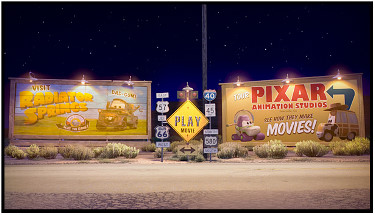 |
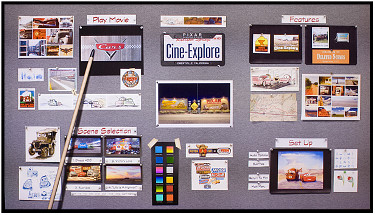 |
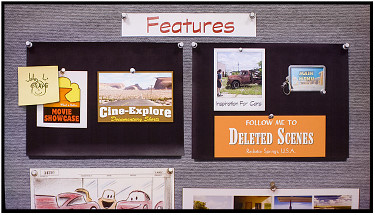 |
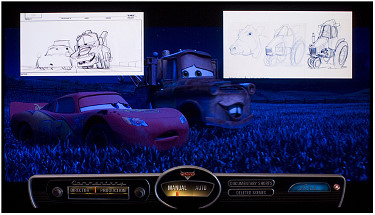 |
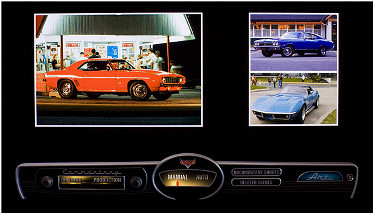 |
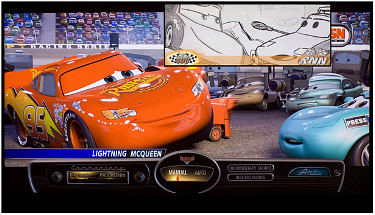 |
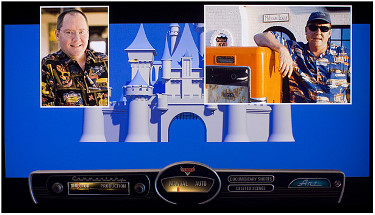 |
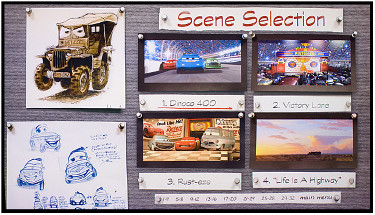 |
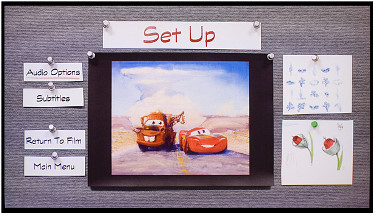 |
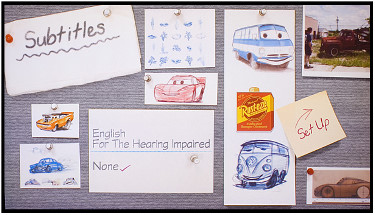 |
Recommendation: 10
It's Pixar. It's Reference. It's fun. Knock yourself out.
Leonard Norwitz
LensViews
November 9th, 2007
January, 2010

